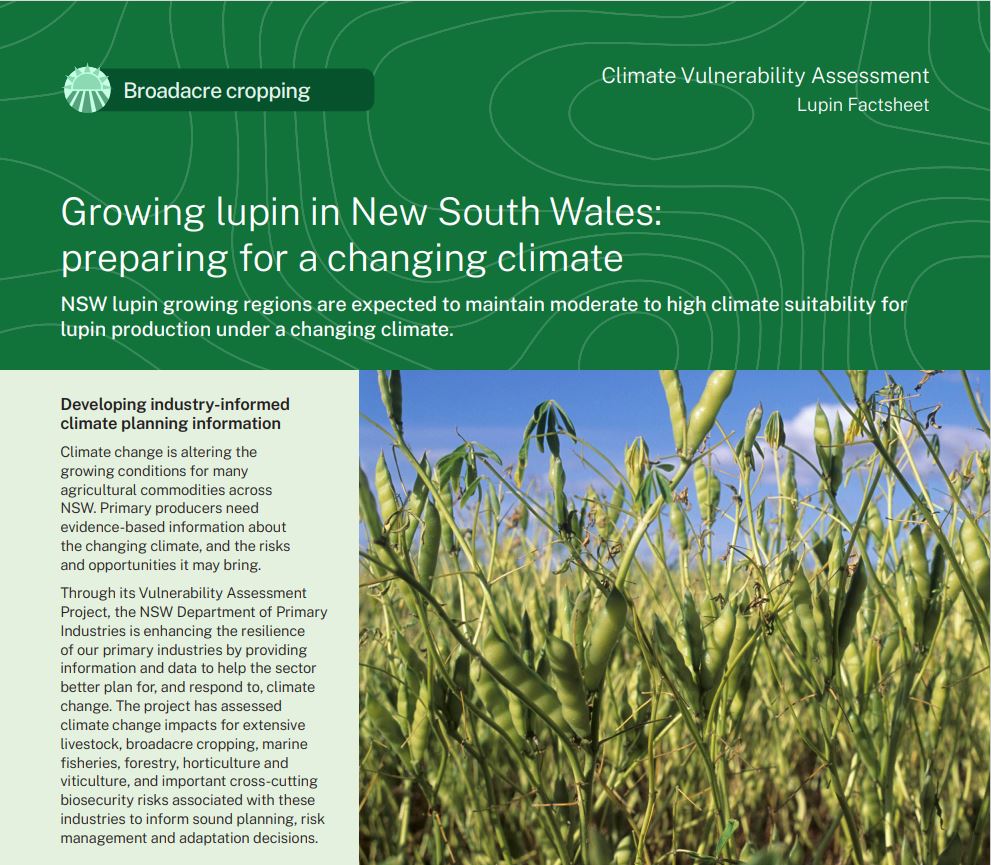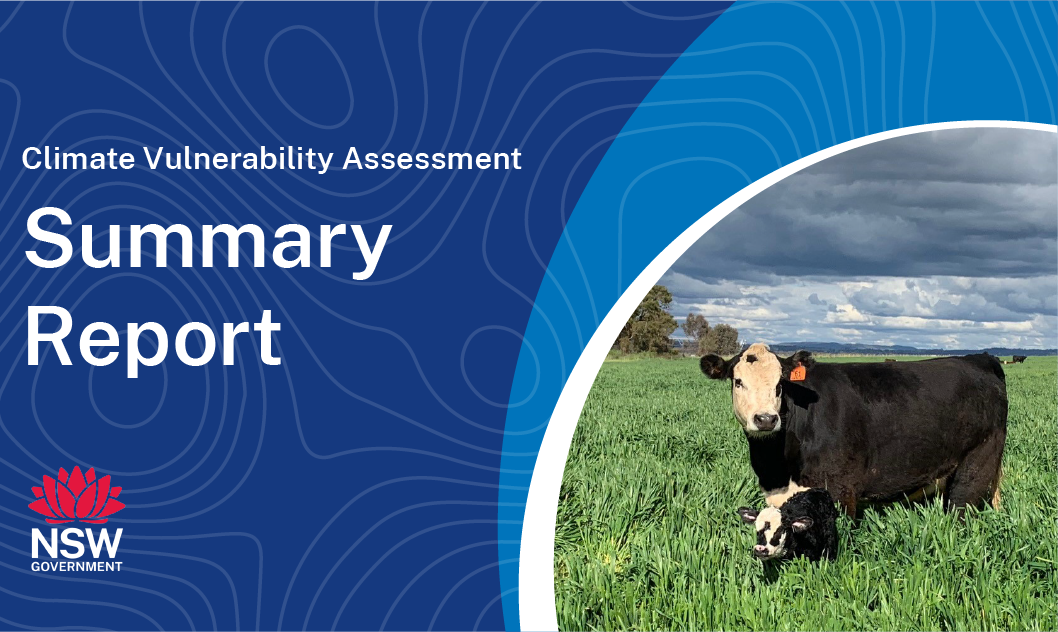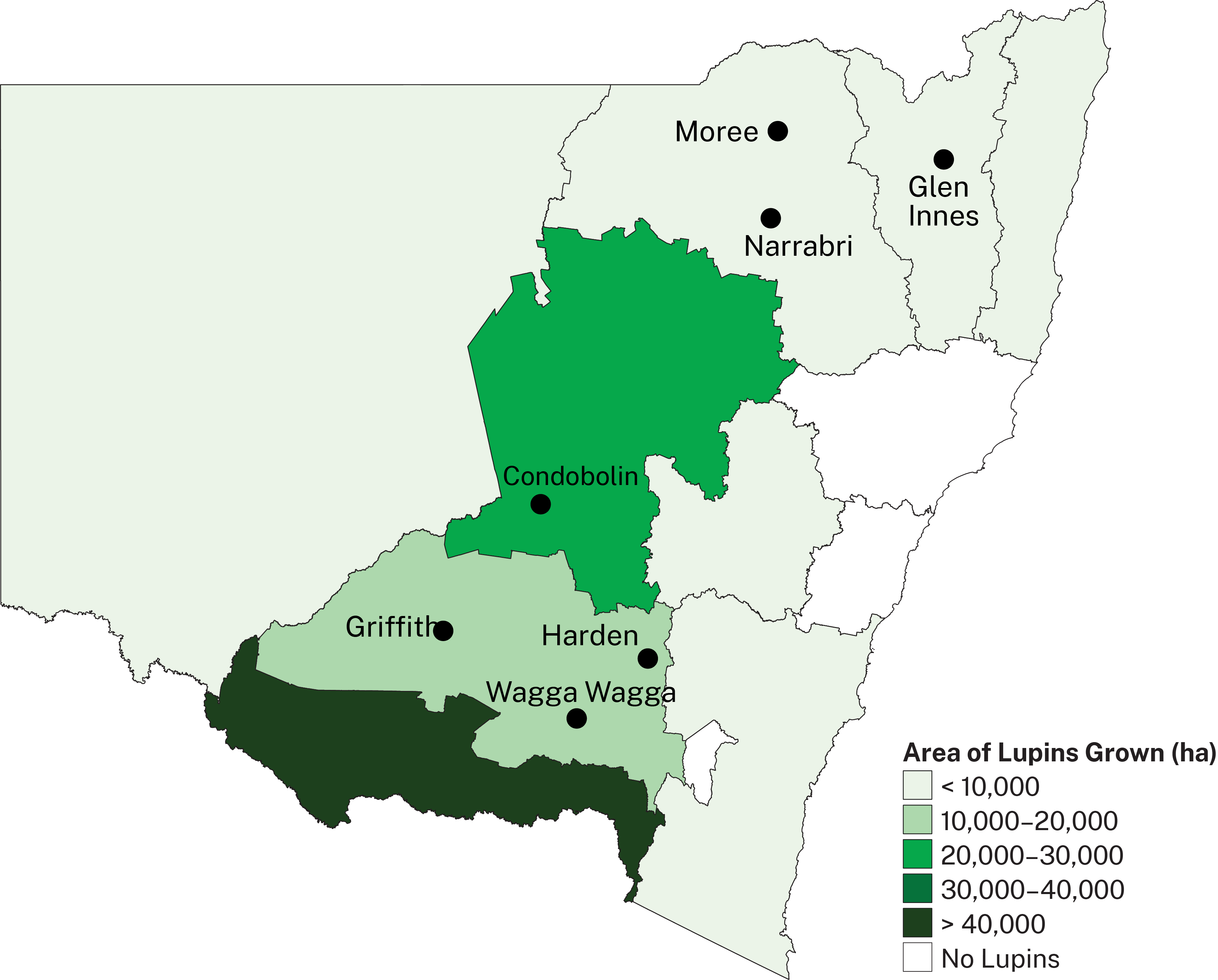What is the NSW DPIRD Climate Vulnerability Assessment? ⏷
Climate change is altering the growing conditions for many agricultural commodities across NSW. Primary producers need evidence-based information about the changing climate, and the risks and opportunities it may bring.
The NSW DPIRD Climate Vulnerability Assessments are enhancing the resilience of our primary industries by providing information and data to help the sector better plan for, and respond to, climate change. They have assessed climate change impacts for extensive livestock, broadacre and irrigated cropping, marine fisheries, forestry, horticulture and viticulture, and important biosecurity risks associated with these industries to inform sound planning, risk management and adaptation decisions.
How we assessed climate suitability ⏷
Climate projections were sourced from Climate Change in Australia’s ‘Application Ready Data’. This dataset is comprised of projections from an ensemble of 8 global climate models, each presenting a plausible future climate. The models differ in their projections, giving rise to uncertainty which is reflected in the confidence statements given in brackets. Care should be taken when interpreting these results.
The Climate Vulnerability Assessment is intended to highlight potential industry- or regional-level changes. Intermediate and high emissions scenarios were used in the assessments (RCP4.5 and RCP8.5), but these are not the only future scenarios possible. The inclusion of climate variables important to the commodities production was based on published research, expert knowledge and data quality and availability.
Learn more in the Climate Vulnerability Assessment Project Framework.
Climate impacts: what to expect
NSW lupin growing regions are likely to maintain moderate to high climate suitability for lupin production by 2050 under both emissions scenarios.
Lupin vulnerabilities
- Changes in rainfall are likely to impact climate suitability for lupin production across the current growing region (low confidence). The direction and magnitude of these changes are uncertain. However, greater changes to rainfall are expected under the higher emissions scenario.
- Warmer temperatures are likely to accelerate plant development across all regions of the state (high confidence).
Lupin opportunities
- Temperatures are likely to remain generally suitable for lupin growth across the state, with minimal to moderate increases in climate suitability in upland areas along the Great Dividing Range (high confidence). Expansion of lupin growing regions into colder locations such as Glen Innes and Harden may be possible with current varieties under a warming climate.
Adapting to the changing climate
Adapting to a shorter growing season
- Later sowing and a later harvest may be necessary if the growing season for lupin becomes shorter under a warming climate. Expansion to the west of the current growing regions may also be possible, if lupin varieties can be developed that have accelerated development or are water efficient during reproductive growth.
Where can I find the climate suitability maps?
Maps of historical and future climate suitability for commodities were produced to demonstrate where in the state a commodity is likely to thrive or else be limited by future climatic conditions. The maps are not provided on these webpages but can be found in the Climate Vulnerability Assessment Summary Report (PDF, 41425.92 KB).
Lupin Factsheet
(PDF, 5776.19 KB)

Summary Report
(PDF, 41425.92 KB)

 Lupin in NSW
Lupin in NSW